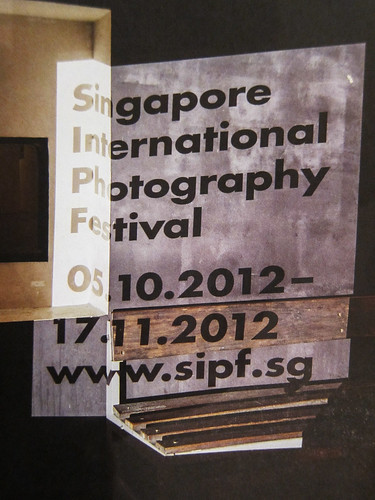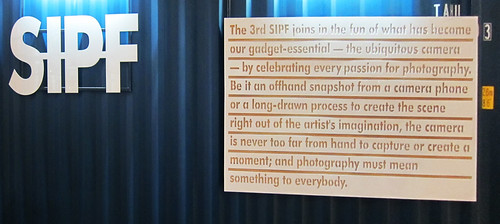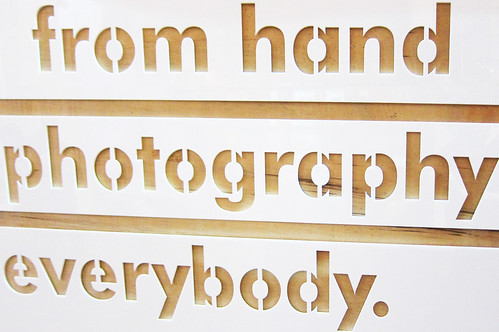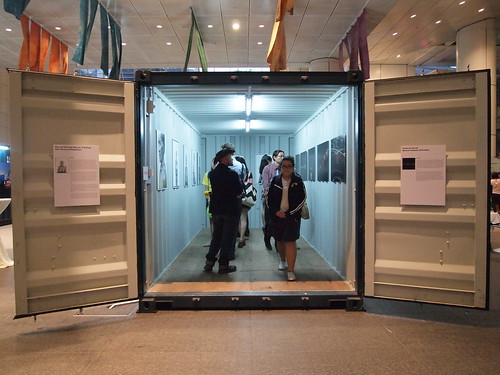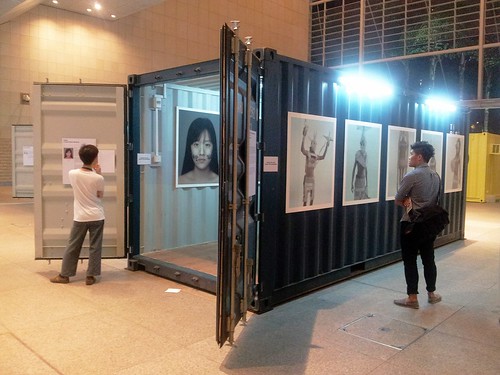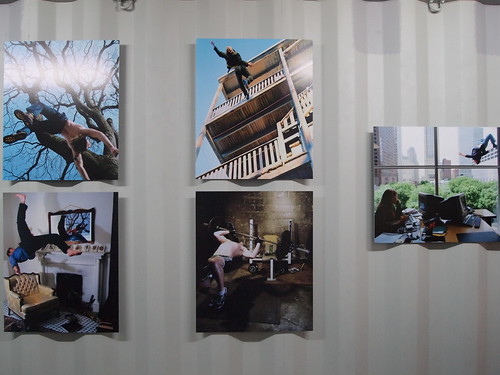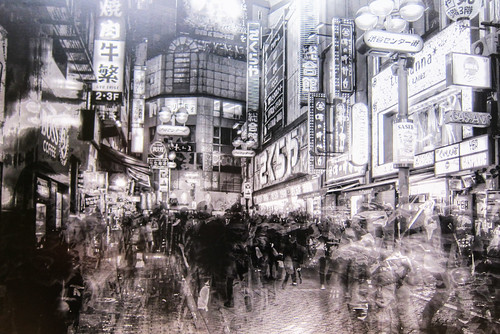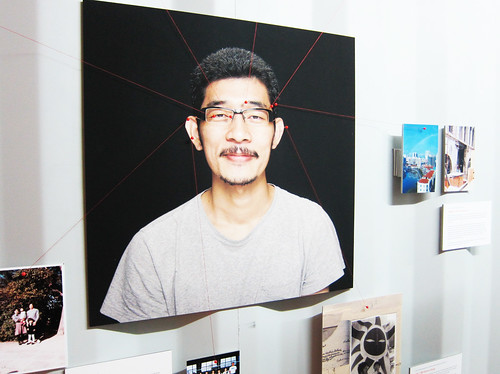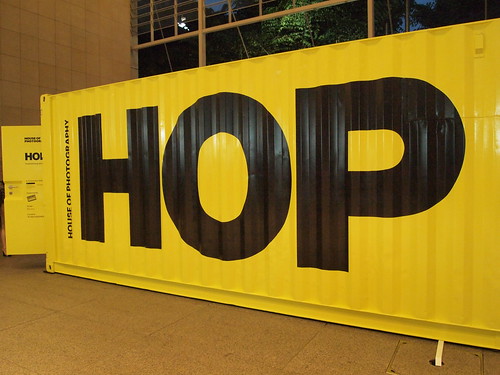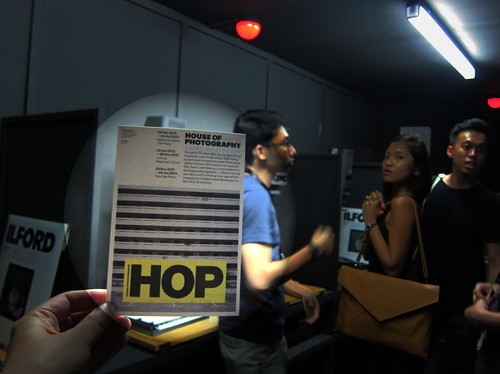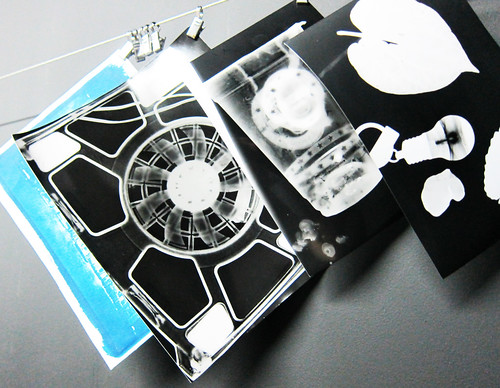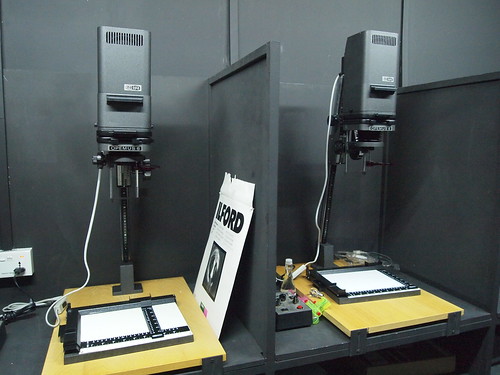The Singapore International Photography Festival (SIPF) is a biennial gathering of minds from around the world with the common pursuit of advancing the art and appreciation of photography. It aims to be a much-needed arena for critical thought and academic discussion on photography in Southeast Asia. The SIPF also functions as a key platform to discover, nurture and propel Southeast Asian photographers onto the international stage. Through its satellite programmes, the festival aims to engage the public and cultivate a larger audience. At the core of SIPF is a firm belief that everyone can enjoy photography.
At the Opening Night at National Library Building on 5th October, I was greeted with the large summary paragraph that sums up SIPF objective at the reception counter. It feels good to know and see that an international festival such as this is here in Singapore, with many grand, professional names, but at the same time, reaching out to everyone who is interested in the art form. At that moment, I participated by using my camera to create my summary of SIPF.
With just two instalments in its short history, SIPF has attracted the participation of the photography world’s biggest names in its third instalment which takes place from 5 Oct to 17 Nov 2012.
The 3rd SIPF will see the involvement of Magnum Photos, the world’s most prestigious photo agency co-founded by Henri Cartier-Bresson; renowned contemporary Chinese artist Wang Qingsong; and Italian photographer and artistic director of the Rapallo Contemporary Photography Show Andrea Botto.
As well as these prominent guests, the Festival’s core exhibition features 414 images by 50 photographers from 25 countries around the world. They were selected from close to 9,000 images submitted in response to SIPF’s Open Call held from Nov 2011 to Apr 2012, and are displayed at the Alliance Francaise, the National Library Building, the Singapore Management University Gallery, The Substation, ArtScience Museum®at Marina BaySands and The Photographic Society of Singapore at Selegie Arts Centre.
“This is a very exciting moment for the community of photographers in Singapore,”says Ms Gwen Lee, Director of the SIPF. “We are thrilled that so many photographers from around the world responded to our open call and that we have some of the world’s best photographers taking part in this year’s festival. I believe this is a sign that photographers the world over are starting to see SIPF as a key event they must take part in.”
Opening Reception
The Artitute team was invited to be at the Opening reception at the National Library Building on 5th October. We were delighted to see the photographs on display inside a number of containers, out of the gallery spaces, within an open space. Interesting showcase, but I thought better lighting considerations would make justice to the photographs, instead of the harsh fluorescent light tubes. The narrow space inside the individual container is also a constraint to the audience’s views. I did not understand the trouble to box-up these photographs when they are already in an open area. Still, I took time and effort to look through all the photographs as they are really beautiful. Photography is not an easy art form, and a good photograph is not just one that is taken with a high-end, expensive camera. Instead, it has to be a visual that is strong enough to convey the message (no matter how complicated it is) with no words or little words. Some of the works on display sprung from an issue with too many focus, thus losing the essence and the impact to communicate. However, there are a few that deserve more than 30 seconds view-time; mentioning, and also sharing. Here are three photographers that I want to mention.
Kerry Skarbakka (United States)
– The Struggle to Right Oneself
His photographic works is in response to the world that we are all living in, having to constantly test our stability in various forms. The images stand as ominous messages and reminders that we are all vulnerable to losing our footing and grasp. They convey the primal qualities f the human condition as a precarious balancing act between the struggle against our desire to survive and our fantasy to transcend our humanness.
Norihisa Hosaka (Japan)
– Burning Chrome
Hosaka wanted to photograph Tokyo City with pictures that unite light, mass and time. We are all familiar with the bright neon lights that covered the city, and being a part of the city. With the 2011 earthquake and tsunami, the country is now experiencing a nuclear catastrophe in Fukushima. Ironically, these nuclear plants powered the well-loved and enchanting city lights. Hosaka ponders about this and is taking the photographs differently. The images appear to be a memory of power wastage and a record of a new era of power reduction.
Hu Qiren (Singapore)
– Mian Xiang 面相: The Art of Traditional Chinese Face-Reading
In Hu’s photographs, one does not just view the portraits he has created, but you can go deeper into the story about the person in the photograph. With the interest in face-reading, or Physiognomy, Hu examines his model’s life based on evidences from old photographs, documents and belongings.
Community Engagement
At the heart of the SIPF is a firm belief that everyone can enjoy photography. “The SIPF is more than just a showcase of photographic art,” says Ms Lee. “We are about nurturing an audience and adding value to society through public education and engagement.”
This year, to promote public appreciation of the art, a shipping container has been transformed into a House of Photography (HOP) – a fully operational mobile darkroom and education centre that will allow the public to learn about photography and develop actual photographic prints. It will be located at the National Library Building during the SIPF and will travel to various Community Clubs, schools and libraries after the Festival. In addition, a comprehensive learning programme and booklet has been created for educators to guide their secondary and tertiary students through various Festival components.
The 3rd SIPF will also feature Silvermine, a 30-year collection of 300 images taken by regular Beijing residents; evening presentations, film screenings, guided tours, workshops, public forums and fringe activities. All these will bring Singapore photography into sharp focus from 5 Oct to 17 Nov 2012.
Programme Highlights
As part of the Festival’s objective to nurture emerging photographic talents, the SIPF, in partnership with Magnum Photos, has launched the inaugural Magnum Mentorship Singapore. From Jul to Oct 2012, 23 photographers will be mentored by Magnum photographer Mark Powell (UK), Jacob Aue Sobol (Denmark) and Stuart Franklin (UK). The participants and their mentors will meet in Singapore during the Festival for a final five-day workshop from 9 to 13 Oct and an exhibition of the participants’ works at The Arts House from 14 to 20 Oct. This is the first such programme in Asia for Magnum Photos and is supported by Leica Camera Asia Pacific and the National Arts Council.
Another first is the showcase of a monumental 42-metre-long work by renowned Chinese contemporary artist and photographer Wang Qingsong, aptly titled The History of Monuments. Wang, who is known for photographic works of epic proportions will also be giving a public talk at The Singapore Art Museum, as will other international photographers, at various venues of the SIPF.
Check out www.sipf.sg for more information on SIPF programmes, workshops, dates and tickets.
More photographs of the Opening can be found @ http://www.flickr.com/photos/artituteart/sets/72157631701812173/with/8061793103/
Texts by Karen Mitchell. Photographs by Karen Mitchell, Suzzana Chew and Chee Wei Teck
Date:
5th October to 17th November 2012
Venues:
Albert Court Village Hotel
Alliance Française
ArtScience Museum at Marina Bay Sands
The Arts House
City Square Mall
National Library Building
National Museum of Singapore
Photographic Society of Singapore
Sculpture Square
8Q SAM
Singapore Art Museum
Singapore Management University
The Substation
Enquires: Office: +65 6339-8655
Fax: +65 6339-5030.
Email: info@sipf.sg
Media Enquiries: press@sipf.sg
Matters related to Open Call Submission: exhibition@sipf.sg
General Enquiries: info@sipf.sg

Karen Mitchell
Karen puts her thoughts and ideas onto her “TO BE HAPPY” line of merchandise when she is not doing art with kids or writing about art.
